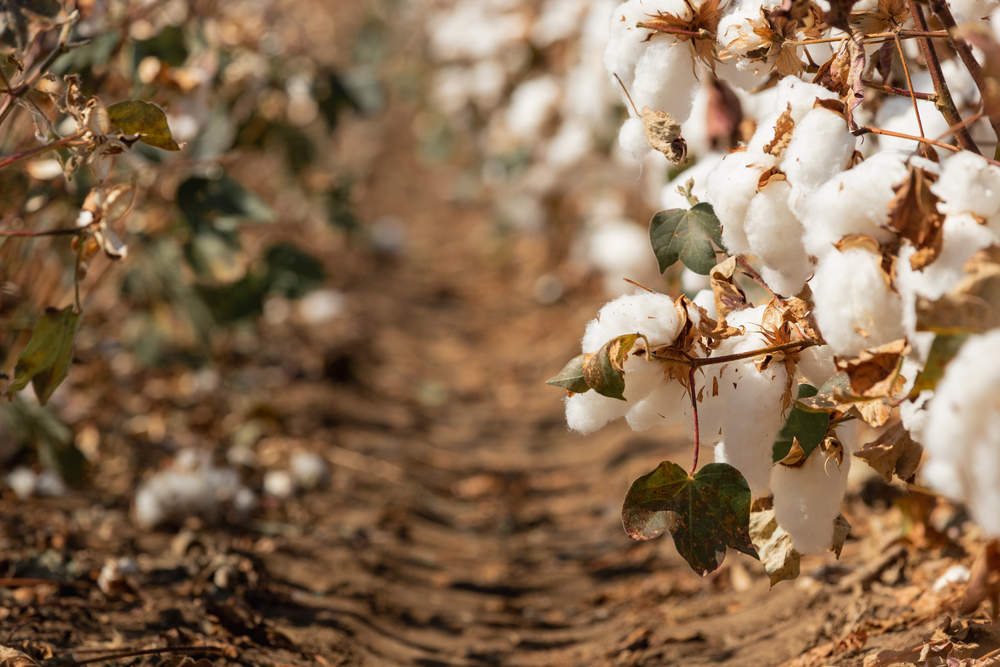We use cookies to improve your experience on our website and to personalise the content shown to you. By clicking 'Accept' you are accepting our cookie policy. You can personalise your options within your browser settings.

Are you conscious about what effect your consumer choices have on our environment? Since upholstery fabric can use a lot of resources and harmful chemicals during the production process, it's becoming increasingly important to be mindful of fabrics we purchase in order to reduce our global footprint.
In this blog post, we'll explain the environmental impact of traditional textile production methods and discuss how I Want Fabric works towards creating a more sustainable industry.
Textiles are everywhere, but their environmental impacts are often overlooked. Textile production is a complex topic that involves the usage of countless resources such as water, chemicals, and energy.
Some upholstery fabrics used today are produced in non-sustainable ways that entail harsh chemical processes, alarming levels of water waste, the destruction of important ecological habitats, and a severe carbon footprint.
It's essential that both consumers and producers become mindful of how our textiles are manufactured in order to make better choices for ourselves and our environment. Below are the key things to be aware of when it comes to upholstery fabric production:
The textile industry is one of the most detrimental to fresh water resources. From dyeing fabrics and washing products, enormous amounts of water can be consumed and dirtied in the process of producing upholstery fabric.
The pollution caused by the industry has led to a rapid decrease in the quality of clean water sources globally. Not only does this impact those who use natural resources for agricultural purposes, it also affects entire communities living near polluted water sources.
However with proper enforcement of standards in the textile industry, clean water shortages and environmental degradation can be minimised. It is vital for governments around the world to take steps to ensure that these polluting activities are regulated, in order to protect our precious fresh water reserves.
The process of converting raw materials into clothes and fashion accessories has left a large impact on the planet, with deforestation being one of the biggest issues. Over 200 million trees are cut down every year to make certain upholstery fabrics like rayon and viscose.
As populations continue to grow and demand for fashionable products increases, this rate is only expected to increase in the coming years, making it important to opt for more eco-friendly fabrics.
The use of pesticides and herbicides in cotton production is a major environmental concern due to the potential for contamination of local water sources. The chemicals used in conventional cotton farming can also be harmful to soil health and wildlife. Combined, these issues can cause irreversible damage to the environment if not properly managed.
Sustainable agricultural practices such as integrated pest management are considered by many to be the solution; by using natural pesticide and herbicide alternatives, farmers reduce the amount of chemicals being released into nature without sacrificing productivity or crop quality.
By being mindful of how upholstery fabrics are made, where they come from, and making sure your products have been sourced responsibly, there are simple ways to reduce the environmental footprint associated with textile manufacturing.
Choose quality fabrics that are made to last and can be reused or recycled. High-quality fabrics are often more durable, meaning they’re less likely to need replacing as quickly, reducing the amount of waste produced.
Buying secondhand clothes prevents them from ending up in a landfill and reduces the demand for new clothes, which requires energy and resources to produce. When shopping secondhand, be sure to choose quality over quantity so that your clothes will last longer.
Finally, proper care and maintenance of your furniture will help reduce the environmental impact of textile production. Regular dusting and vacuuming can extend the life of upholstered items, while regular spot cleaning with a mild soap solution can keep fabrics looking their best.
Furniture manufacturers also recommend avoiding direct sunlight and using fabric protector sprays to keep upholstery fabrics in good condition. Taking the time to care for your furniture properly can help ensure that it lasts longer, therefore reducing the need for new fabrics and other materials used in production.
By taking these simple steps, we can all do our part in reducing the environmental impact of textile production. From choosing high quality fabrics and shopping secondhand to caring for our furniture, there are many ways that we can make a positive difference in the world. Together we can help reduce waste, conserve resources, and ultimately save our planet for future generations.
At I Want Fabric, we are committed to reducing the environmental impact of textile production. Through our Sale category, we are offering customers the opportunity to reduce their own personal environmental footprint with our collection of second-hand fabrics, one-off fabric remnants, overstock from suppliers, and clearance stock.
This means not only are you able to buy quality second-hand upholstery fabric, but you're helping divert products from landfills which would otherwise contribute to global warming. What's more, all of our fabrics are tested for quality and durability to ensure they meet our high standards, meaning that they will last long and therefore help reduce the demand for new fabrics.
Browse our upholstery fabrics today at our Manchester based shop or online to see how you can reduce the environmental impact of textile production.